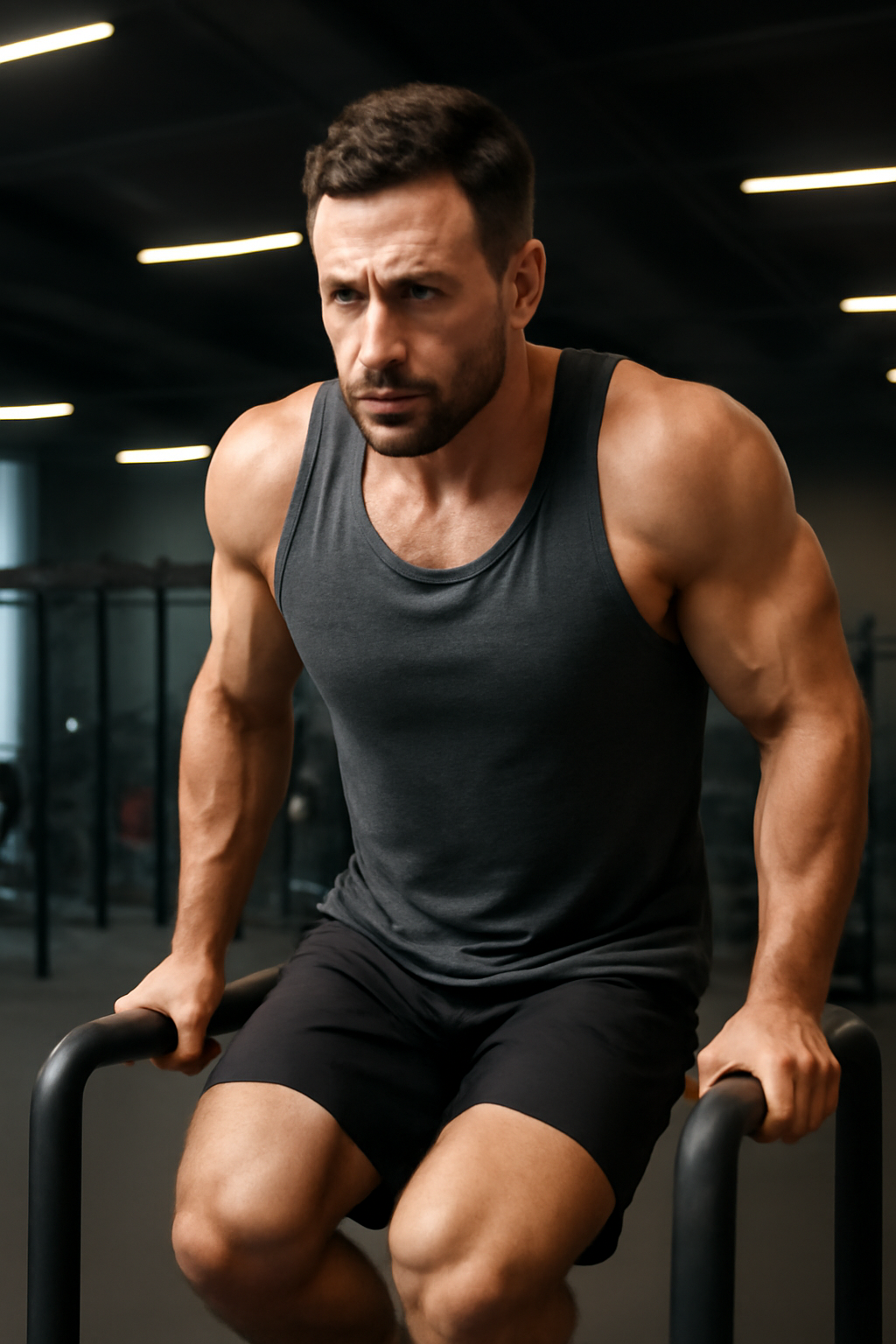One of the easiest bodyweight workouts can really be one of the most powerful ones. Imagine you want a strong workout aimed at several muscle areas at once. Dips could be exactly what you require in that situation. But what do dips work out, and how can you get the most out of this workout in your fitness program?
Dips are a really good exercise for training your chest, shoulders, and triceps. Their advantages, moreover, go well beyond these main muscle areas. They are great compound exercises since they also work your core for stability, thereby helping you to be stable. Knowing how dips function and the ideal methods for executing them will help you take your fitness program to the next level whether you are a novice or a seasoned gym-goer.
This all-inclusive manual will cover what dips target, the different advantages of using them in your exercises, and how to do them correctly. We will also look at other options to fit your level of fitness and objectives. In addition, you will discover how to include dips into your regimen for best outcomes. You will have all the tools needed to improve your strength, build muscular bulk, and attain higher general fitness by the end of this essay.
Knowing Dips: What Does Dips Work Out?
Essentially, dips are a bodyweight workout emphasizing the upper body muscles, especially the chest, shoulders, and triceps. A complex exercise called dips offers a total body strength test by concurrently working several muscle groups. What distinguishes dips from other workouts, therefore, is their capacity to involve the core, which supports body stability during the activity.
Muscle Groups Targeted by Dips:
Chest (Pectoralis Major): The pectorals are the main muscle group exercised during dips. The chest muscles are stimulated when you lower your torso and press back up, especially if you lean forward during the dip.
Triceps (Triceps Brachii): Pushing your body back up from the dip posture is mostly done by the triceps on the rear of your upper arm. The most growth and strength development will come from this muscular group.
Shoulders (Deltoids): Pressing your body upward activates the deltoids, especially the front (anterior) deltoids. Your shoulder muscles help to support your body all through the movement as well.
Core (Abdominals and Obliques): Though not the major emphasis, your abdominal and obliques work during dips to preserve stability and correct form.
Back (Lats and Rhomboids): The muscles of the back, such as the lats and rhomboids, help to stabilize the body during dips as well.
Advantages of Dips: Reasons to Include Them in Your Exercise Program
Including dips in your exercise program offers several advantages that improve your strength and body. Here's why you should think about including dips regularly in your exercises:
Increases Upper Body Strength
Among the most efficient workouts to increase upper body strength are dips. Since they work several muscles, including the chest, shoulders, and triceps, they enable you to develop significant strength to improve your general fitness.Strengthens Functional Fitness
Dips are practical exercises that replicate real-life tasks like pushing, pulling, or even climbing. Strengthening your pressing muscles helps you to carry out daily chores more effectively and with less weariness.Improves Posture
Dips can aid with posture as they stimulate the chest, shoulders, and back muscles. Stronger upper body muscles help to improve alignment and lower the risk of slouching or back pain.Variety and Adaptability
From simple bodyweight dips to weighted dips or ring dips, dips may be done in many different ways, offering infinite variants that let you constantly push your muscles and avoid plateaus.Increases Muscle Mass
Dips are a fantastic upper body muscle mass builder. Gradually raising resistance or intensity will help to increase hypertrophy (muscle growth) and improve muscular definition.
Various Dip Variations to Maximize Outcomes
Dips are flexible; depending on your fitness level and objectives, you may do them in several ways. Among the most well-liked alternatives are:
Standard Dips (Chest and Triceps Emphasis)
The traditional dip exercises the chest and triceps while also activating the shoulders. Keeping an upright torso and lowering your body until your elbows are at a 90-degree angle will help you to really target these main muscle areas.Chest Dips (Chest-Oriented)
Lean forward during the dip and drop your body deeper to stress the chest more. This change in body angle decreases the focus on the triceps and promotes chest activation.Tricep Dips (Triceps-Centric)
Keep your torso as erect as you can for a tricep-focused dip. This variation emphasizes the triceps to drive your body back up, hence reducing chest involvement.Bench Dips (For Beginners)
A strong bench or platform will let you do bench dips if you lack parallel bars or are new to dips. Dip down to activate the triceps and chest by putting your hands behind you on the bench and your feet flat on the ground.Advanced Variation: Ring Dips
Ring dips are a more sophisticated variation done on gymnastic rings for increased difficulty. The instability of the rings compels your body to use more muscles—including the core—for stability.
Correct Dip Execution: Advice on Good Form
Performing your dips with the correct form is absolutely crucial if you want to avoid injury and maximize their benefits. Here is how to perform things properly:
Initial Position
Place your hands on the parallel bars, making sure your wrists are straight and your hands are shoulder-width apart. Start with your arms slightly bent, shoulders engaged, and chest up.Lowering Your Body
Bend your elbows to gradually lower your body. To prevent undue shoulder strain, keep your elbows toward your sides. As you lower, lean forward a little for chest dips. Triceps dips call for an upright torso.
Lower your body till your elbows are roughly 90 degrees. Avoid too much depth, especially if you're just starting since going too deep could create shoulder discomfort.Pushing Back Upward
Extending your elbows and using the chest and triceps will help your body to push back to the starting position. To preserve muscular activation and prevent swinging, regulate the movement.Breathing
As you push yourself back up, inhale; as you lower your body, exhale. Correct breathing keeps you in control and in time all through the workout.
Including Dips in Your Exercise Program
Any exercise program can benefit greatly from dips. Here is how you can efficiently include them into your schedule:
Begin with a Correct Warm-Up
Always warm up first. Dynamic stretches for the shoulders, chest, and arms will assist prepare your muscles and joints for the action.Start with Bodyweight Dips
Start with bodyweight dips to understand correct form and technique if you're unfamiliar with dips. Gradually work up to 2-3 sets of 5-10 reps as you gain strength.Slowly Increase Weight
Once you have perfected bodyweight dips, think about including resistance with a dip belt, weighted vest, or other tools. Over time, this will enable you to develop more strength and muscular bulk.Include Dips with Other Upper Body Workouts
Exercises such as push-ups, pull-ups, or bench presses complement dips quite nicely. This guarantees that you are aiming for all upper body regions and getting balanced muscular growth.Include Several Variations
Keep pushing your muscles and avoid training plateaus by using several dip variations like ring or weighted dips.
Common Errors to Avoid During Dips
Watch out for these typical errors to maximize your dips and prevent injury:
Elbows Flare
Letting your elbows extend out during dips could strain the shoulder joints. To guarantee correct form, keep your elbows near your torso.Too Deep a Drop
Going too deep in the dip can put too much stress on the shoulder joint. Stay within a comfortable range of motion when your elbows are bent to roughly 90 degrees.Swinging or Jerking Movements
During dips, avoid using momentum or swinging your body. To enhance muscular activation, the movement should be constant and controlled.
FAQ: What Do Dips Work Out?
Primarily, what muscles do dips target?
With supplementary core and back muscle involvement, dips mostly target the chest, triceps, and shoulders.Do dips strengthen chest muscles?
Absolutely, particularly if you drop forward. This change boosts chest activity to promote more muscular growth.When doing dips, how deep should I go?
To prevent shoulder pain, lower your body till your elbows are roughly 90 degrees. Going too deep can harm.Are dips safe for novices?
Absolutely, with help or starting with bench dips to develop strength before moving to unassisted dips, novices can do dips.How many dip reps should I perform?
Begin with two to three sets of five to ten repetitions. You may raise the amount of reps or add weight as your strength grows.
Final Reflections
To summarize, we have looked at how adding dips into your exercise regimen can help you develop upper body strength, focus on important muscles like the chest and triceps, and enhance general fitness. You will notice quantifiable changes in your strength and muscular growth by using the correct technique and gradually increasing intensity.
Having a defined roadmap, now is the moment to act. Include dips in your exercise program starting now; you'll notice significant improvements in your upper body strength and muscle definition.
We would appreciate your feedback! Feel free to share this content with those who could gain from it; comment below with your experiences or any inquiries. Hamilton Home Fitness is another option for tools and resources to assist you in more quickly achieving your fitness objectives.








